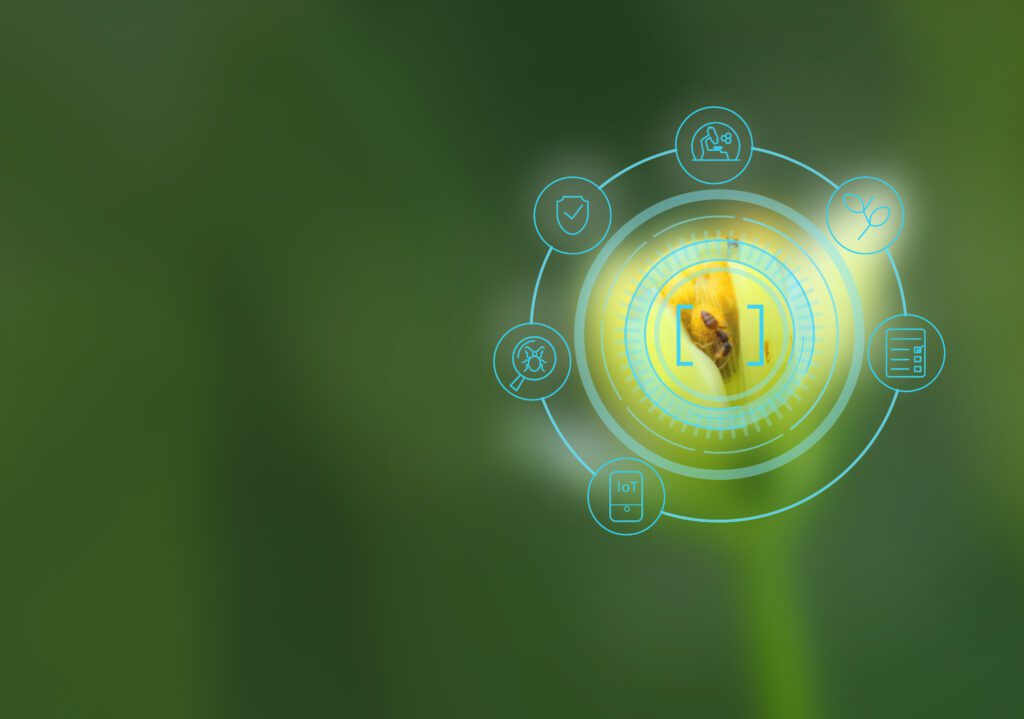
by LUIS RODRIGUEZ
2025 is here, and that brings a whole new year of farming. Knowing what we can do to protect our crops could help farmers minimize economic losses due to pest problems. Farmers must manage pests effectively to protect their crops and their investments. A pest can be any organism, like insects, weeds, or pathogens, that harms the crop in any way. An Integrated Pest Management (IPM) program is crucial for controlling pests. IPM combines practices to reduce pest control costs, conserve energy, and minimize pesticide risks to people, animals, and the environment, while effectively addressing pest issues.
The following five practices are common to all IPM programs:
- Identify Key Pest: Correctly identifying the pest is crucial for selecting the appropriate control method. Misidentification can lead to ineffective treatments. For example, mites are arachnids, not insects, so using an insecticide won’t control them. Instead, a miticide would be necessary for effective management.
- Monitor and Scout: After identification, you will need to monitor and scout the pest population to assess its impact. This helps determine whether the pest population exceeds the economic threshold, which is the point at which control measures are needed to prevent significant crop loss or damage.
- Follow Control Guidelines: Establish clear guidelines to decide when to act. This includes determining the level of pest damage that is tolerable and acceptable in relation to crop value. Set specific treatment thresholds and timing for interventions, ensuring that control methods are applied when they will be most effective and cost-efficient.
- Prevent Pest Problems: Prevention is key to minimizing pest issues. This can include using pest-resistant crop varieties, rotating pesticides to avoid resistance, implementing good sanitation practices, and using physical barriers or cultural methods (like good irrigation and fertilization) to keep pests from entering the production area. Preventative measures reduce the need for reactive treatments and help maintain long-term pest control.
- Integrate different IPM practices —There are multiple methods available that can help you control pest problems:
- Cultural control: Involves selecting the right plants for the right place and maintaining them through appropriate mowing, pruning, fertilization, irrigation, and sanitation. The idea is that healthy plants are less susceptible to pest problems.
- Biological control: Uses natural enemies like ladybugs, parasitic wasps, minute pirate bugs, and others, to control pests, either introduced or native to Florida.
- Mechanical or Physical Control: This involves using machines, and tools to reduce pests, such as tractors, tilling, plowing, barriers, traps, or manually removing pests.
- Genetic Control: This method uses genetically resistant plants, often through selective breeding, to prevent pest damage. Root-knot nematode-resistant plants are examples of genetic control.
- Chemical Control: This involves using pesticides to manage pests. While effective, it requires careful consideration of human exposure and environmental risks. Always follow label instructions when using pesticides, use pesticides only when necessary, stay aware of your surroundings, and prevent pesticide resistance by rotating the mode of action of the products you use.
Don’t Underestimate an IPM Program
An IPM program is crucial for farms to prevent pest damage and economic losses. By following key practices, you can create an effective IPM program that minimizes costs, risks, and labor while controlling pests.
For More Information about IMP read the following “Ask IFAS” publication called “Integrated Pest Management goes hand-in-hand with Safety”
Luis Rodriguez is the Polk County Small Farms and Pesticide Education Extension Agent. You can reach him at lrodriguezrosado@ufl.edu

